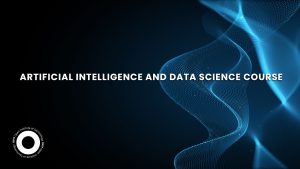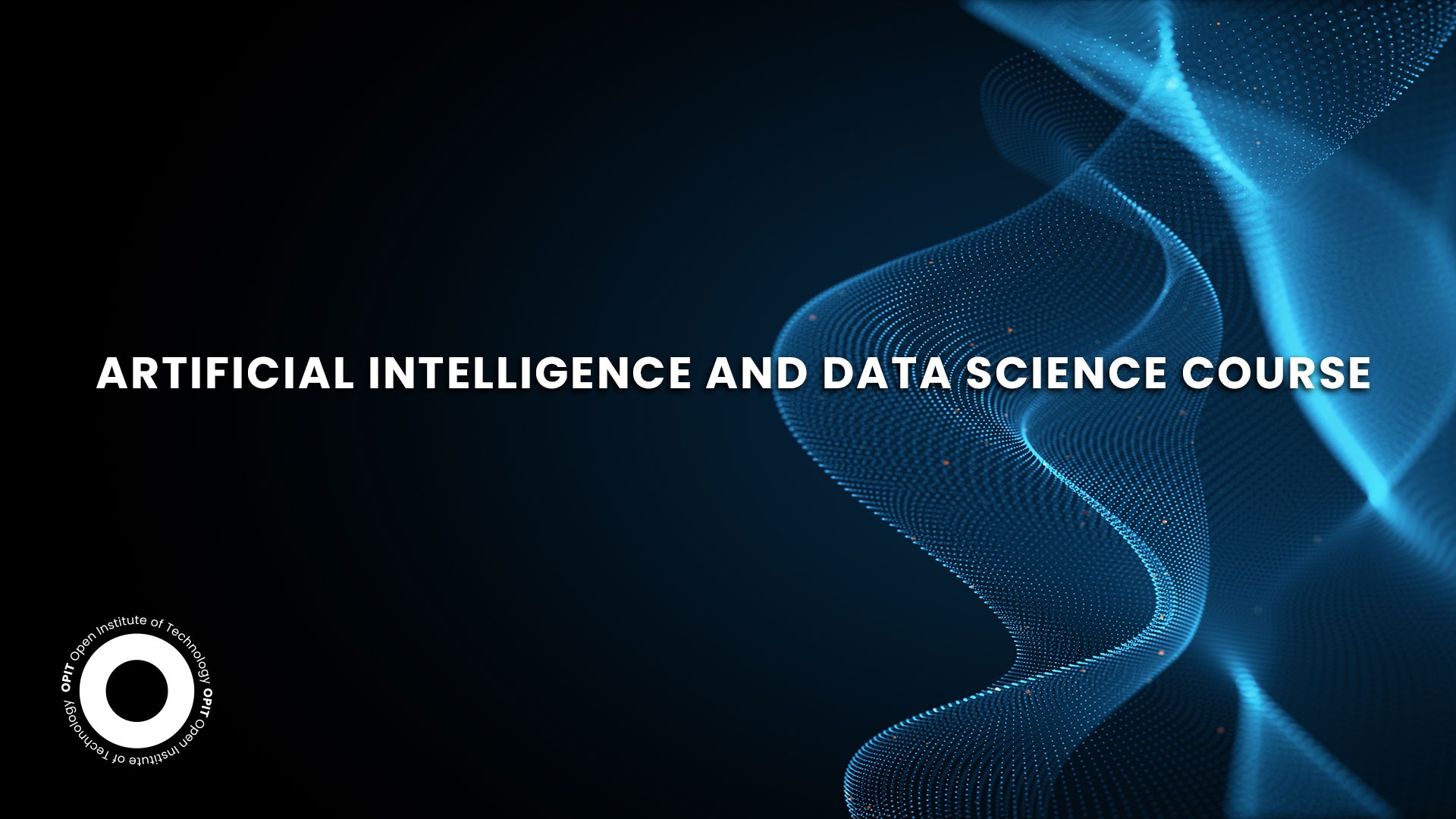

For decades, we have used computers to make important decisions in every arena, from business down to our personal lives. Artificial intelligence is the next evolution in computer-based decision-making. Combined with data science, which is the art of processing, extracting, and analyzing data, AI stands to hold a huge influence over our future.
You stand at the cusp of that technological wave. By completing an artificial intelligence and data science course, you develop dual capabilities that put you in the perfect position to enjoy a superb career.
Factors to Consider When Choosing an AI and Data Science Course
You need to know what you’re letting yourself in for before choosing a data science and artificial intelligence course. After all, the course you choose (and its quality) will impact your career prospects. Consider these six factors when making your choice.
1 – Course Content
Both data science and AI are expansive fields that contain a lot of categories and specializations. So, the question you need to ask is does the course cover what I need to know to get the job I want? If it doesn’t, you end up dedicating months (or even years) of your life to a course that brings you no closer to your goals.
2 – Course Duration and Flexibility
Not every student has the luxury of being able to commit full-time to an AI and data science course. Some have work, families, and other commitments to maintain. Ideally, your course should be of an appropriate length for your needs, in addition to offering the flexibility you need to fit your studies around the rest of your life.
3 – Instructor Expertise and Experience
Though data science has been around for decades, AI is still a somewhat nascent field, at least in terms of its modern form. You want to see that your course is created and overseen by people who know what they’re talking about. Do they have direct industry experience? Are their qualifications up to standard? What does your instructor have that makes taking their AI and data science course worthwhile?
4 – Course Fees and Return on Investment
A career in data science is usually strong enough to offer a good return on investment, with European data scientists pulling in an average of €60,815 per year. Throw AI into the mix and you have extra skills that could easily lead you toward six figures. Still, the cost of the course plays a role in your decision, with some courses costing five figures themselves.
5 – Online vs. Offline Courses
Picking between online and offline courses is like playing an arcade game with a guaranteed prize – there’s no way to lose. Your only consideration is what works best for you. Offline courses are great for self-motivated learners who need flexibility. Online courses put you in a classroom environment so you have direct contact with instructors and peers.
6 – Certification and Accreditation
When you finally start applying for jobs, the first thing your potential employer will ask is “Where did this person study their artificial intelligence and data science course?” The answer to that question will impact their decision, meaning your course provider needs to have a solid enough reputation to make their certifications and accreditations worth having.
Top AI and Data Science Courses
There is a metaphorical river of courses, both online and off, that can teach you about artificial intelligence and data science. Here are four of the best.
Course 1 – AI For Business Specialization (University of Pennsylvania via Coursera)
AI, Big Data, and the core concepts behind machine learning combine to create this AI and data science course. Beyond teaching you how to apply these computing concepts in a business setting, AI For Business Specialization digs into the ethics of applying AI fairly inside a business and how these evolving technologies will affect the people you work with, for, and manage.
Key Features
- Direct exposure to industry-hardened professionals who apply the skills you’re learning
- Includes peer-reviewed assessments designed to test your knowledge
- A 100% online course that offers complete flexibility in how you schedule your learning
- No experience in data science or AI required to get started
Pros and Cons
For somebody new to the concepts of AI and data science, this is the perfect course because it starts you out at the beginner level and builds you up from there. It’s flexible, too, with the course providers recommending two hours of learning per week to complete the four-month course. However, the course carries no university credit, so those using it to supplement their existing studies have to make do with the certificate and nothing more.
Course 2 – Machine Learning (Udacity)
Those looking for a budget-conscious artificial intelligence and data science course can rely on Udacity to provide its Machine Learning course at no charge. You’ll need a solid understanding of concepts like linear algebra and probability theory, making this course unsuitable for beginners. But assuming you come prepared, you’ll learn about the main approaches in machine learning (supervised, unsupervised, and reinforcement learning) in a self-paced online environment.
Key Features
- Takes approximately four months to complete, though you can finish at your own pace
- Created and taught by industry experts
- Ideal for building foundational knowledge for future courses related to data science and AI
- Teaches multiple approaches to machine learning
Pros and Cons
The price is certainly right with this course, as you’re getting something very useful at no cost. It’s also an online version of class CS7641, which is taught at Georgia Tech, so the course has real-world credentials behind it. Sadly, its college-based origins don’t mean that you’ll get college credit with the course. It’s also pretty limited to specific forms of machine learning, making it great as an introduction to basic concepts but perhaps not as useful to people who already have some understanding of data science and AI.
Course 3 – Introduction to Artificial Intelligence (AI) (IBM via Coursera)
Quick, intense, and practical are just some of the words we can use to describe this data science and artificial intelligence course. IBM’s experts are clearly masters in the field (they wouldn’t be working for IBM if they weren’t) and they’ve distilled some of the best of their knowledge into this nine-hour completely online course. You’ll learn about the applications of AI in real-world scenarios, start getting to grips with concepts like machine learning and neural networks, and receive direct career advice from your instructors.
Key Features
- Offered by a Fortune 50 company that specializes in AI and data science
- Free enrollment for a self-paced course
- You get direct career advice from people who work in the field
- The course offers a shareable online certificate that looks great on your LinkedIn profile
Pros and Cons
Let’s get the obvious out of the way first – this is an AI and data science course for those who want to learn the fundamentals before building their knowledge in other ways. But it’s the connections that come with the course that make this such a strong contender. Having people from IBM, who already work in the field that interests you, to advise you is great for people who need a route into AI and data science.
Course 4 – Master in Applied Data Science & AI (OPIT)
A Master’s degree allows you to dig deeper into the concepts of AI and data science, with OPIT’s degree being perfect for those in the postgraduate phase who’ve balked at the cost of similar programs. This AI and data science course requires an extensive time investment of between 12 and 18 months, though it’s fully online so you can learn at your own pace. It also counts toward college credits, offering 90 ECTS upon completion.
Key Features
- Completely online so it offers flexibility in terms of how and where you learn
- Provided by an EU-accredited institution to ensure the certification you receive is actually useful
- You get 24/7 access to tutors who can advise you when you’re stuck
- Progressive assessments are favored over “final exams” and other high-pressure tests
Pros and Cons
This artificial intelligence and data science course is the most expensive on the list, clocking in at €6,500 (or €4,950 for early birds). It also requires a BSc in an appropriate field, such as computer science, to start studying. But that investment in both time and money leads you to a course that has full accreditation under the European Qualification Framework and gives you a well-rounded set of skills that set you up for C-Suite positions in your future career.
Tips for Success in AI and Data Science Courses
An AI and data science course could offer the best tutelage in the world but it won’t mean a thing if you’re not applying yourself as a student. These quick tips help you take what you learn further:
- Set clear goals for what you hope to achieve, both within the course and after completion, so you always have a path to follow.
- Don’t take “this course requires x number of hours per week” as given. Practice and set time to study whenever you can to build on your knowledge.
- As valuable as your peers and instructors may be, they’re not the only resources available to you. Engage with online communities and forums to stay up to date on trends in AI and data science.
- Some courses offer direct examples of how what you learn applies to the real world. Others don’t, so you have to seek out (and apply) your learning to real projects yourself.
- Think about what AI looked like five years ago compared to today. This is a continuously evolving field (the same goes for data science), so continued learning is a must once you’ve completed your course.
Combine AI and Data Sciences for Career Advancement
Earlier, we stated that data scientists earn an average of €60,815 per year in Europe. That’s a starting point. Mastery in the fields of AI and data science (which starts with an artificial intelligence and data science course) puts you in a position to work at the C-Suite level in many of today’s businesses. Investing in yourself now, when these fields are still in their growth phase, puts you in the perfect position to take advantage as we see both fields enjoy explosive growth in the future.
Related posts

Source:
- Agenda Digitale, published on November 25th, 2025
In recent years, the word ” sustainability ” has become a firm fixture in the corporate lexicon. However, simply “doing no harm” is no longer enough: the climate crisis , social inequalities , and the erosion of natural resources require a change of pace. This is where the net-positive paradigm comes in , a model that isn’t content to simply reduce negative impacts, but aims to generate more social and environmental value than is consumed.
This isn’t about philanthropy, nor is it about reputational makeovers: net-positive is a strategic approach that intertwines economics, technology, and corporate culture. Within this framework, digitalization becomes an essential lever, capable of enabling regenerative models through circular platforms and exponential technologies.
Blockchain, AI, and IoT: The Technological Triad of Regeneration
Blockchain, Artificial Intelligence, and the Internet of Things represent the technological triad that makes this paradigm shift possible. Each addresses a critical point in regeneration.
Blockchain guarantees the traceability of material flows and product life cycles, allowing a regenerated dress or a bottle collected at sea to tell their story in a transparent and verifiable way.
Artificial Intelligence optimizes recovery and redistribution chains, predicting supply and demand, reducing waste and improving the efficiency of circular processes .
Finally, IoT enables real-time monitoring, from sensors installed at recycling plants to sharing mobility platforms, returning granular data for quick, informed decisions.
These integrated technologies allow us to move beyond linear vision and enable systems in which value is continuously regenerated.
New business models: from product-as-a-service to incentive tokens
Digital regeneration is n’t limited to the technological dimension; it’s redefining business models. More and more companies are adopting product-as-a-service approaches , transforming goods into services: from technical clothing rentals to pay-per-use for industrial machinery. This approach reduces resource consumption and encourages modular design, designed for reuse.
At the same time, circular marketplaces create ecosystems where materials, components, and products find new life. No longer waste, but input for other production processes. The logic of scarcity is overturned in an economy of regenerated abundance.
To complete the picture, incentive tokens — digital tools that reward virtuous behavior, from collecting plastic from the sea to reusing used clothing — activate global communities and catalyze private capital for regeneration.
Measuring Impact: Integrated Metrics for Net-Positiveness
One of the main obstacles to the widespread adoption of net-positive models is the difficulty of measuring their impact. Traditional profit-focused accounting systems are not enough. They need to be combined with integrated metrics that combine ESG and ROI, such as impact-weighted accounting or innovative indicators like lifetime carbon savings.
In this way, companies can validate the scalability of their models and attract investors who are increasingly attentive to financial returns that go hand in hand with social and environmental returns.
Case studies: RePlanet Energy, RIFO, and Ogyre
Concrete examples demonstrate how the combination of circular platforms and exponential technologies can generate real value. RePlanet Energy has defined its Massive Transformative Purpose as “Enabling Regeneration” and is now providing sustainable energy to Nigerian schools and hospitals, thanks in part to transparent blockchain-based supply chains and the active contribution of employees. RIFO, a Tuscan circular fashion brand, regenerates textile waste into new clothing, supporting local artisans and promoting workplace inclusion, with transparency in the production process as a distinctive feature and driver of loyalty. Ogyre incentivizes fishermen to collect plastic during their fishing trips; the recovered material is digitally tracked and transformed into new products, while the global community participates through tokens and environmental compensation programs.
These cases demonstrate how regeneration and profitability are not contradictory, but can actually feed off each other, strengthening the competitiveness of businesses.
From Net Zero to Net Positive: The Role of Massive Transformative Purpose
The crucial point lies in the distinction between sustainability and regeneration. The former aims for net zero, that is, reducing the impact until it is completely neutralized. The latter goes further, aiming for a net positive, capable of giving back more than it consumes.
This shift in perspective requires a strong Massive Transformative Purpose: an inspiring and shared goal that guides strategic choices, preventing technology from becoming a sterile end. Without this level of intentionality, even the most advanced tools risk turning into gadgets with no impact.
Regenerating business also means regenerating skills to train a new generation of professionals capable not only of using technologies but also of directing them towards regenerative business models. From this perspective, training becomes the first step in a transformation that is simultaneously cultural, economic, and social.
The Regenerative Future: Technology, Skills, and Shared Value
Digital regeneration is not an abstract concept, but a concrete practice already being tested by companies in Europe and around the world. It’s an opportunity for businesses to redefine their role, moving from mere economic operators to drivers of net-positive value for society and the environment.
The combination of blockchain, AI, and IoT with circular product-as-a-service models, marketplaces, and incentive tokens can enable scalable and sustainable regenerative ecosystems. The future of business isn’t just measured in terms of margins, but in the ability to leave the world better than we found it.

Source:
- Raconteur, published on November 06th, 2025
Many firms have conducted successful Artificial Intelligence (AI) pilot projects, but scaling them across departments and workflows remains a challenge. Inference costs, data silos, talent gaps and poor alignment with business strategy are just some of the issues that leave organisations trapped in pilot purgatory. This inability to scale successful experiments means AI’s potential for improving enterprise efficiency, decision-making and innovation isn’t fully realised. So what’s the solution?
Although it’s not a magic bullet, an AI operating model is really the foundation for scaling pilot projects up to enterprise-wide deployments. Essentially it’s a structured framework that defines how the organisation develops, deploys and governs AI. By bringing together infrastructure, data, people, and governance in a flexible and secure way, it ensures that AI delivers value at scale while remaining ethical and compliant.
“A successful AI proof-of-concept is like building a single race car that can go fast,” says Professor Yu Xiong, chair of business analytics at the UK-based Surrey Business School. “An efficient AI technology operations model, however, is the entire system – the processes, tools, and team structures – for continuously manufacturing, maintaining, and safely operating an entire fleet of cars.”
But while the importance of this framework is clear, how should enterprises establish and embed it?
“It begins with a clear strategy that defines objectives, desired outcomes, and measurable success criteria, such as model performance, bias detection, and regulatory compliance metrics,” says Professor Azadeh Haratiannezhadi, co-founder of generative AI company Taktify and professor of generative AI in cybersecurity at OPIT – the Open Institute of Technology.
Platforms, tools and MLOps pipelines that enable models to be deployed, monitored and scaled in a safe and efficient way are also essential in practical terms.
“Tools and infrastructure must also be selected with transparency, cost, and governance in mind,” says Efrain Ruh, continental chief technology officer for Europe at Digitate. “Crucially, organisations need to continuously monitor the evolving AI landscape and adapt their models to new capabilities and market offerings.”
An open approach
The most effective AI operating models are also founded on openness, interoperability and modularity. Open source platforms and tools provide greater control over data, deployment environments and costs, for example. These characteristics can help enterprises to avoid vendor lock-in, successfully align AI to business culture and values, and embed it safely into cross-department workflows.
“Modularity and platformisation…avoids building isolated ‘silos’ for each project,” explains professor Xiong. “Instead, it provides a shared, reusable ‘AI platform’ that integrates toolchains for data preparation, model training, deployment, monitoring, and retraining. This drastically improves efficiency and reduces the cost of redundant work.”
A strong data strategy is equally vital for ensuring high-quality performance and reducing bias. Ideally, the AI operating model should be cloud and LLM agnostic too.
“This allows organisations to coordinate and orchestrate AI agents from various sources, whether that’s internal or 3rd party,” says Babak Hodjat, global chief technology officer of AI at Cognizant. “The interoperability also means businesses can adopt an agile iterative process for AI projects that is guided by measuring efficiency, productivity, and quality gains, while guaranteeing trust and safety are built into all elements of design and implementation.”
A robust AI operating model should feature clear objectives for compliance, security and data privacy, as well as accountability structures. Richard Corbridge, chief information officer of Segro, advises organisations to: “Start small with well-scoped pilots that solve real pain points, then bake in repeatable patterns, data contracts, test harnesses, explainability checks and rollback plans, so learning can be scaled without multiplying risk. If you don’t codify how models are approved, deployed, monitored and retired, you won’t get past pilot purgatory.”
Of course, technology alone can’t drive successful AI adoption at scale: the right skills and culture are also essential for embedding AI across the enterprise.
“Multidisciplinary teams that combine technical expertise in AI, security, and governance with deep business knowledge create a foundation for sustainable adoption,” says Professor Haratiannezhadi. “Ongoing training ensures staff acquire advanced AI skills while understanding associated risks and responsibilities.”
Ultimately, an AI operating model is the playbook that enables an enterprise to use AI responsibly and effectively at scale. By drawing together governance, technological infrastructure, cultural change and open collaboration, it supports the shift from isolated experiments to the kind of sustainable AI capability that can drive competitive advantage.
In other words, it’s the foundation for turning ambition into reality, and finally escaping pilot purgatory for good.
Have questions?
Visit our FAQ page or get in touch with us!
Write us at +39 335 576 0263
Get in touch at hello@opit.com
Talk to one of our Study Advisors
We are international
We can speak in:


